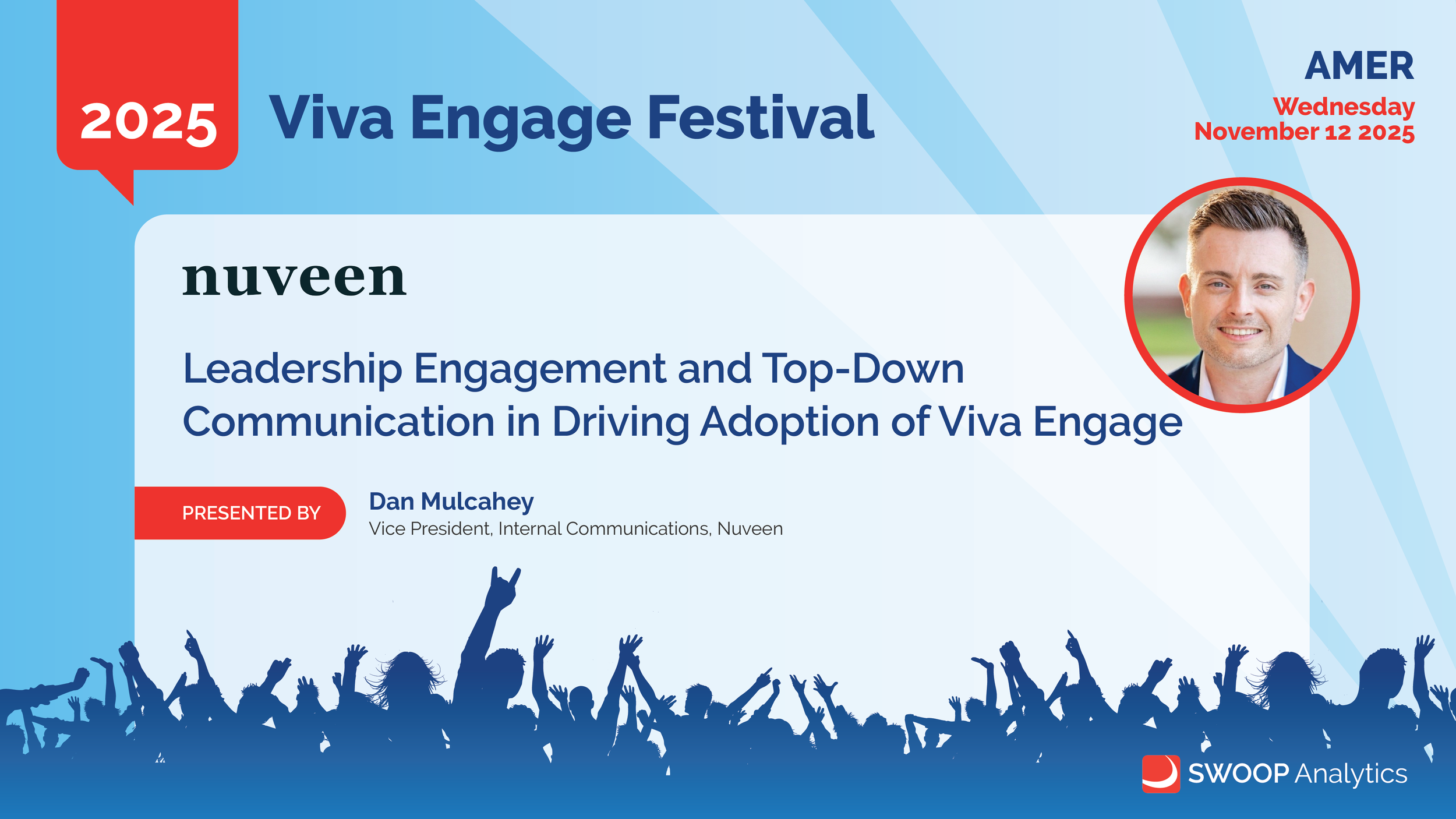Key insights from SWOOP Analytics’ 2025 Viva Engage Benchmarking Report
What’s this session about
We'll brief you on SWOOP Analytics' 2025/26 Viva Engage Benchmarking Report and show you the good, the bad and the ugly trends of Viva Engage usage, as well as giving you a first-look at a game changing app to help you deal with information overload.
-
Key Messages
Viva Engage is a genuine enterprise comms channel, not a “nice-to-have”. Activity continues to grow year on year.
More people are active, but conversations are getting shallower. Reactions are up; replies and two-way dialogue are down.
Tagging works. Posts with @mentions get 200% more replies.
Questions work. Asking a question boosts replies by 150%.
The ‘dancefloor’ has changed. Lots of people are showing up, but fewer are dancing. Organisations need to deliberately spark conversation.
Information overload is real — and expensive. SWOOP launched a new Information Overload Calculator to help organisations quantify the cost.
Community health varies widely. High performers (like Medibank, BT/Arqiva, NSW Government) follow predictable patterns: authenticity, leadership presence, clear purpose, consistent posting.
What you can take from this
Design posts to invite replies (questions, tagging, prompts).
Be deliberate: don’t treat Viva Engage as a dumping ground.
Use measurement to lead your strategy, not follow it.
Audit your channels — simplify where possible.
Use the new overload calculator to influence stakeholders.
Visit SWOOP Academy to access tutorials, masterclasses and resources that help you get the most from SWOOP and Viva Engage.
Explore all seven of our Success Guides. These practical guides turn our Benchmarking Report into simple, actionable steps for comms, IT and community teams.
Information Overload Calculator demo:
Meet the speakers:
Sharon Dawson
SWOOP Analytics
Dr Laurence Lock Lee
SWOOP Analytics
Cai Kjaer
SWOOP Analytics








